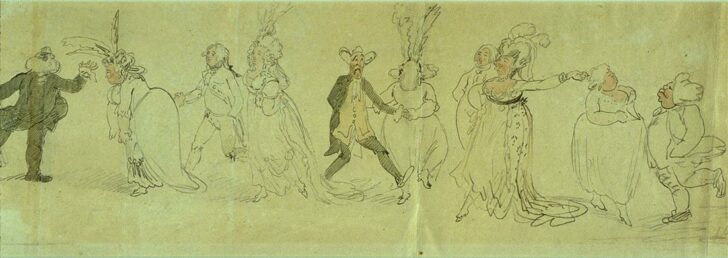Dancers [Five Couples (recto); Three Couples (verso)]
Isaac Cruikshank

Description
March 28, 2009
Although born in Edinburgh, Scotland, Cruikshank is considered, along with Thomas Rowlandson and James Gillray, to be one of the most important satirists of the Georgian period in England. There was a strong tradition in England of social satire and parody, beginning with William Hogarth earlier in the eighteenth century and extending under the pen of Cruikshank’s better-known son, George Cruikshank, well into the nineteenth century. Although many of Cruikshank’s satires are grounded in political events, this double-sided drawing depicting couples dancing falls into a group of drawings executed between 1790 and 1804 known as “drolls.”
Cruikshank spent years critiquing the social mores, fashion, and foibles of contemporary society, all of which are brought into play in the depictions of these dancers. Some of the figures here are self-consciously elegant, contrasting with others who are awkward or less attractive, such as the man who steps on the train of his partner’s dress. He was also involved in London theater, and the broad approach he takes in these caricatures, including grimaces and facial distortions, may derive from his knowledge of the stage. However satirical the specific depictions, Cruikshank has arrayed his couples with an eye to the flow inherent in dance.
Usage Rights:
If you are interested in using an image for a publication, please visit https://umma.umich.edu/request-image/ for more information and to fill out the online Image Rights and Reproductions Request Form.